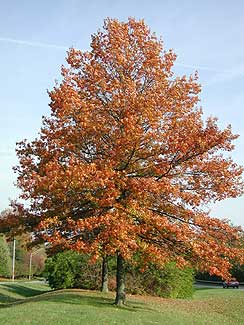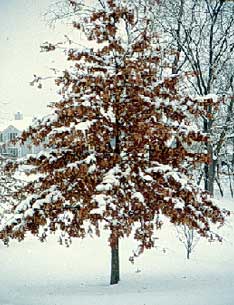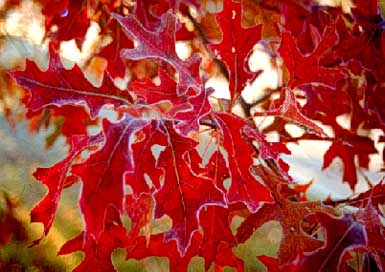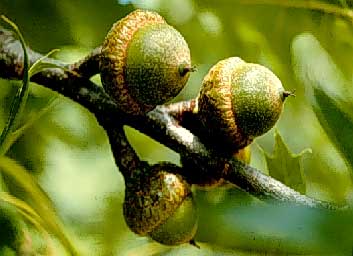 Pin Oak - Quercus palustris
Pin Oak - Quercus palustris
Beech Family (Fagaceae)
A recognizable trait of pin oak is that its lower branches hang down. It is one of the tallest trees in Kentucky, commonly reaching over 60 feet tall. The Champion tree is in Jefferson county near Louisville. It is more than 100 feet tall.
- Native habitat: Massachusetts to Delaware, west to Wisconsin and Arkansas.
- Growth habit: Strongly pyramidal, becoming oval-pyramidal with age.
- Tree size: 60 to 70 feet tall with a 25- to 40-foot spread. Pin oak can reach a height of more than 100 feet.
- Flower and fruit: Flowers are brown and not showy. Fruit is a nut, half an inch long and wide, light brown, enclosed at the base in a thin cap.
- Leaf: Alternate, simple, 3 to 6 inches long, with five to seven lobes and u-shaped sinuses. Leaves are glossy dark green in summer, becoming russet, bronze or red in fall. Some leaves persist into winter.
- Hardiness: Winter hardy to USDA Zone 4.
- ‘Crown Right' or ‘Crownright' - Is more upright than the species, with branches at a 30- to 60-degree angle to the central leader.
- ‘Sovereign' - Has lower branches at a 90-degree angle to the central leader rather than weeping lower branches.
 Pin oak is easy to transplant because it has a shallow, fibrous root system. Pin oak's ability to thrive in nursery culture explains why it is a common tree found in garden centers. It is a great tree for large landscapes, but its hanging lower branches make it a high-maintenance street tree. Pin oak acorns are produced one per stalk and usually in a cluster just below the current year's growth. They have a prominent spine on the tip of the nut.
Pin oak is easy to transplant because it has a shallow, fibrous root system. Pin oak's ability to thrive in nursery culture explains why it is a common tree found in garden centers. It is a great tree for large landscapes, but its hanging lower branches make it a high-maintenance street tree. Pin oak acorns are produced one per stalk and usually in a cluster just below the current year's growth. They have a prominent spine on the tip of the nut.



